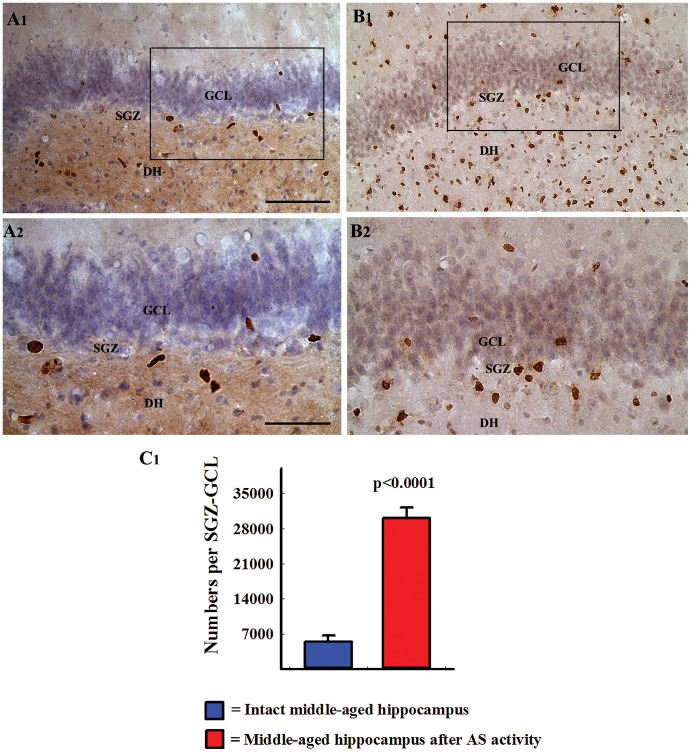Figure 2. Comparison of the distribution of newly generated cells in the dentate gyrus (DG) at 24 hours after 12 daily injections of 5′-bromodeoxyuridine (BrdU) between an intact middle-aged animal (A1) and a middle-aged animal that underwent acute seizure (AS) activity (B1).
The cells are visualized through BrdU immunostaining and hematoxylin counterstaining. A2 and B2 are magnified views of marked regions from A1 and B1. Note that the density of newly born cells in the subgranular zone-granule cell layer (SGZ-GCL) increases in the middle-aged rat after AS activity (B1, B2), in comparison to the age-matched naïve rat (A1 and A2). Also note that the dentate hilus (DH) shows increased density of BrdU immunopositive cells in the rat that underwent AS activity (B1). Scale bar, A1 and B1 = 100 µm; A2 and B2 = 50 µm. The bar chart in C1 compares absolute numbers of newly born cells added over a period of 12 days to the SGZ-GCL between intact middle-aged rats and middle-aged rats that underwent AS activity (n = 5/group). Note that, AS activity considerably increases the numbers of newly born cells in the SGZ-GCL of middle-aged rats.

